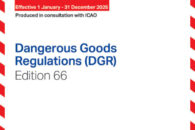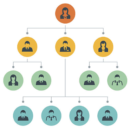
It’s nearly the end of February, but winter weather continues to trouble much of the nation. Be sure not to lose focus on your workplace’s winter safety plan. Hang in there—we’re almost to spring! Regulatory activity picked up a little last week. Here’s the latest:
PHMSA
Paul Roberti has been nominated to be the next administrator of PHMSA. He served in various roles in the first Trump Administration and as a Senate staffer. Based on reporting, he appears to come from mainly a pipeline industry background. His nomination requires confirmation by the Senate. See details here:
Trump picks official from his first term to run pipeline agency – E&E News by POLITICO
In its first such publication since the change in administrations, PHMSA has issued new special permit actions. See them at the links provided:
Regulatory EO from the White House
The Office of the President promulgated an Executive Order that purports to reserve direct creative and interpretive authority for all federal regulations solely to the president and or the attorney general, subject to the president’s authority. How this order would or will play out in terms of its legal and practical impact on agency rulemaking and their legal interpretations of existing regulations is not presently clear. See the EO here:
Ensuring Accountability for All Agencies – The White House
IATA
The Association has issued a clarification of its compliance policy in reference to the exact verbiage on the standard Dangerous Goods Declaration (DGD) found in the IATA DGR. IATA basically states that very minor deviations in language on the DGD do not disqualify the resulting completed DGD from being compliant with the DGR. This after a certain evident confusion in the industry arose following the replacement of the word “risk” with “hazard” in the most recent iteration of the example DGD provided in the DGR itself. See complete details in the IATA correspondence linked to here:
USPS
The Post Office is amending its Publication 52 Hazardous Materials Manual to require that any cremated remains (“cremains”) are packaged in USPS supplied packaging and consigned in accordance with its’ revised requirements. See the action here:
OSHA
The agency issued an ICR renewal related to its Carcinogens Standard. See the ICR here:
FMCSA
The agency issued a delay to enforcement of portions of its recent rulemaking that implemented corrections to the FMCSR. See the details of the delay action at the link:
Labelmaster is a full-service provider of products, shipping and training software, and professional consulting services to assist the DG and HS&E professional to comply with national and international regulations. See our full line of solutions at www.labelmaster.com.



